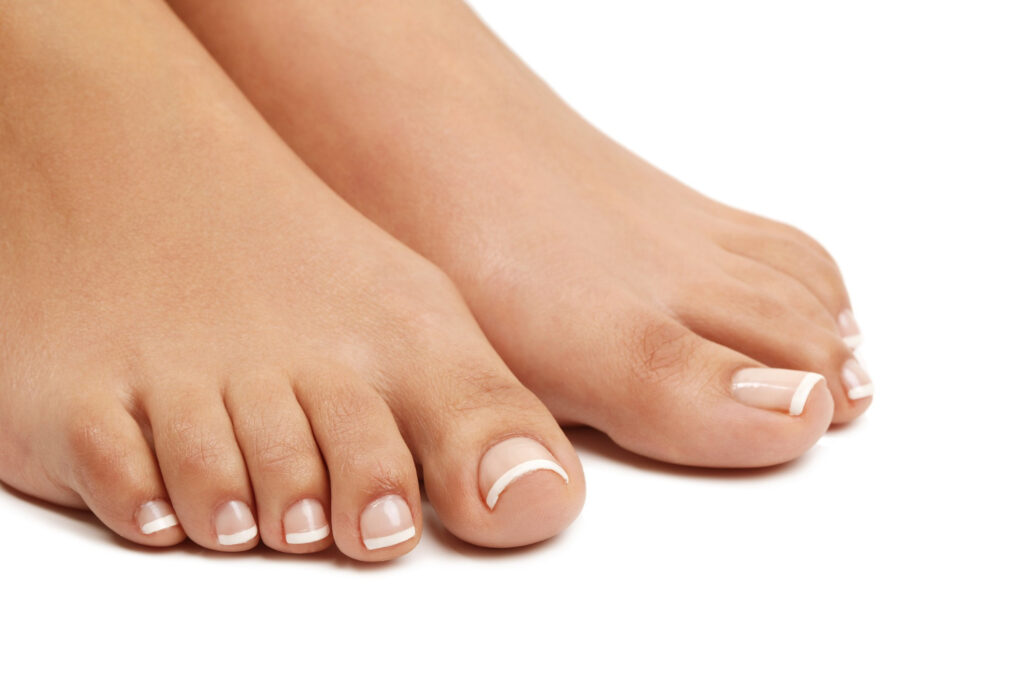
In this article
Toenails protect your toes, but they can sometimes become too thick, causing both cosmetic and health concerns. Although toenails naturally thicken with age, fungal infections, injuries, and certain diseases can lead to excessive thickness. Fungal infections, or onychomycosis, are responsible for over half of these cases, affecting 8% to 10% of the population.
Symptoms of Thick Toenails
Symptoms of thick toenails vary depending on the cause but can become chronic if untreated. Treatments can improve symptoms, though the exact plan depends on the severity. Preventative strategies can also reduce the risk of developing thick toenails.
Types of Thick Toenails
Healthcare providers classify thick toenails into types based on whether they result from fungal infections and the nail’s appearance:
- Onychomycosis: This common toenail fungus affects the nail bed, leading to the thickening of the nail matrix as a new nail grows.
- Onychauxis: Caused by injuries or conditions like psoriasis and diabetes, this type affects people over 65, resulting in thick, discolored nails that may curl and separate from the nail bed.
- Onycholysis: This occurs when the nail plate painlessly separates from the nail bed due to trauma, allergic reactions, or conditions like psoriasis.
Changes in Appearance, Texture, and Odor
Thick toenails can look discolored, curled, and rough. They might be harder to trim, feel brittle, and sometimes emit a foul odor due to fungal infections. Ingrown toenails can lead to painful bacterial or fungal infections.
Causes of Thick Toenails
Toenails thicken when keratin cells, which make up the nail plate, excessively grow. Aging, limited blood circulation, fungal infections, autoimmune disorders, and poor foot hygiene can all contribute to thick toenails.
Risk Factors
Factors that increase the risk of thick toenails include poor foot hygiene, improper nail trimming, aging, tight shoes, swimming, using public showers, foot injuries, frequent pedicures, and conditions affecting the immune system.
Diagnosis
If you notice thickening toenails, consult a healthcare provider or podiatrist. Diagnostic tests may include visual screenings, clip biopsies, and swab tests to identify infections or other causes.
Treatments
Thick toenails can be difficult to treat and may take over a year to improve. Treatment options include:
- Topical Agents: Over-the-counter creams with ingredients like miconazole nitrate and clotrimazole can help control mild fungal infections.
- Antifungal Medication: Oral or topical antifungal medications like terbinafine and itraconazole are effective for more severe cases.
- Psoriasis Medications: Treatments include corticosteroids, vitamin D analogs, and biologics.
- Debridement: Removal of buildup and affected nails, or avulsion of the entire nail, may be necessary.
- Laser Therapy: FDA-approved for short-term treatment, though more research is needed.
- Complementary Approaches: Tea tree oil and Vick’s VapoRub have shown effectiveness in some cases.
Prevention
Prevent thick toenails by wearing properly-fitting shoes, protecting your feet in wet public spaces, maintaining foot hygiene, and trimming nails regularly. Avoid sharing nail clippers and treat conditions like athlete’s foot promptly.
Complications
Untreated thick toenails can lead to cellulitis, loss of toenails, sepsis, osteomyelitis, and permanent tissue damage, especially in those with weakened immune systems.
By understanding the causes, symptoms, and treatment options, you can manage and prevent thick toenails effectively. Regular foot care and prompt medical attention for any issues can maintain healthy toenails
A Quick Review
Thick toenails, often resulting from fungal infections, injuries, or certain diseases, can be both a cosmetic and health concern. Symptoms include discoloration, curling, and rough texture. Treatments range from topical agents to laser therapy. Prevention includes good foot hygiene and wearing properly-fitting shoes
FAQS
What causes thick toenails?
Thick toenails can be caused by fungal infections, injuries, autoimmune disorders, poor circulation, and aging.
How can I treat thick toenails?
Treatments include topical antifungal agents, oral medications, debridement, laser therapy, and complementary approaches like tea tree oil.
Can thick toenails be prevented?
Yes, maintaining proper foot hygiene, wearing well-fitting shoes, and protecting feet in public wet areas can help prevent thick toenails.











